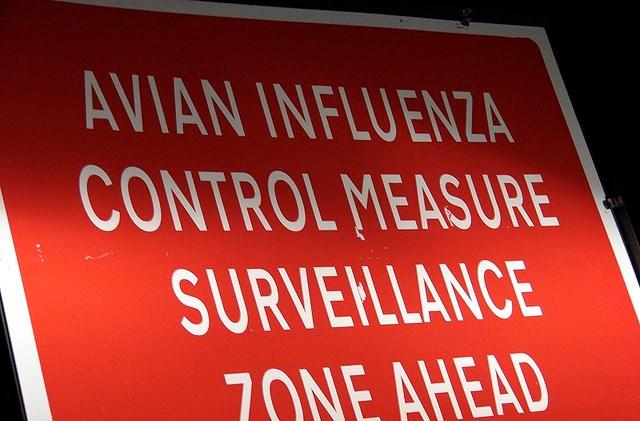Testing at nearby farms in the wake of a highly pathogenic H7N8 avian flu outbreak that struck a turkey facility in southern Indiana last week turned up a low-pathogenic version of the virus eight more farms, hinting that the virus mutated to a more lethal strain as it spread.
In a related development, the US Centers for Disease Control and Prevention (CDC) warned that, because H7 viruses have infected people before, so human infections from the new strain could occur, though the risk to the general public is low.
Although many questions remain about the newly detected strain, tests show that Indiana's H7N8 strain is a North American lineage virus, according to a Jan 15 report to the World Organization for Animal Health (OIE). Deaths at the Dubois County turkey producer prompted testing, and results were confirmed and announced on Jan 15.
Low-path detections
After the first H7N8-affected farm was reported on Jan 15, the Indiana Board of Animal Health (IBAH) announced nine additional H7 detections on Jan 16 and said initial tests indicated highly pathogenic H7N8, a subtype that hasn't been detected before in the United States, and that further tests were under way.
A day later, however, the US Department of Agriculture (USDA) Animal and Plant Health Inspection Service (APHIS) said eight of those nine additional H7 detections were low-pathogenic H7N8 and that tests were ongoing on the ninth flock. The IBAH released a clarification on the pathogenicity of the newly detected viruses the same day.
Birds infected with low-pathogenic avian influenza often have no symptoms or only minor signs of infection. APHIS noted that low-pathogenic H7 viruses, though, have been known to mutate into highly pathogenic strains, which have the potential to spread quickly and cause many deaths in domestic poultry.
John Clifford, DVM, the USDA's chief veterinarian, said, "It appears that there was a low pathogenic virus circulating in the poultry population in this area, and that virus likely mutated into a highly pathogenic virus in one flock." He said that state, industry, and federal sectors worked together to quickly isolate and depopulate the first flock and that efforts are under way to curb the spread of the low-pathogenic version of H7N8.
APHIS said Indiana officials have quarantined the additional farms, and culling has already begun.
Egg farm depopulated; cold slows culling
The IBAH said yesterday that 155,000 egg-laying chickens at a farm that tested negative for the virus are being destroyed as a precaution, because they are considered a "dangerous contact" to an infected farm. That stamping-out operation brings the bird loss number to 401,163.
Culling operations over the past few days have been hampered by extremely cold temperatures, which froze water sources, the IBAH said. So far the step has been completed at 6 of the 10 turkey farms.
Bret Marsh, DVM, Indiana state veterinarian, said in a statement that finding the low-path virus is a sign that animal health officials are keeping pace with the spread of the virus in the area but won't signal a let-up in response efforts. "This finding does not alter the aggressive control strategy [the state's Board of Animal Health] has set forth," he said. "Nor does it change our resolve to eliminate this virus wherever we find it."
So far outbreaks have been reported in Dubois County only, but the surveillance area has now been expanded to include parts of Crawford, Davies, Martin, and Orange counties.
CDC weighs H7 threat to humans
In its statement today, the CDC said no human H7N8 cases have ever been reported in the world, but H7 infections in the past have caused a wide range of symptoms, from just conjunctivitis to severe respiratory illness. The CDC said people at greatest risk are those who have close or prolonged unprotected contact with infected birds or their environments.
Recommendations for the new virus are the same as for the highly pathogenic H5N2 strain that caused more than 200 outbreaks in US poultry last year. According to the CDC, people who had contact with sick birds or their environments should be monitored for 10 days, even if contact was minimal and personal protective equipment was properly worn. Indiana health officials have implemented their monitoring plan, the CDC added.
As with other avian flu viruses, the CDC recommends antiviral medication for symptomatic people.
See also:
Jan 17 APHIS press release
Jan 15 OIE report
Jan 17 IBAH statement
Jan 18 IBAH situation update
Jan 19 CDC statement on H7N8
Jan 15 CIDRAP News story "High-path H7N8 outbreak reported at Indiana turkey farm"




















